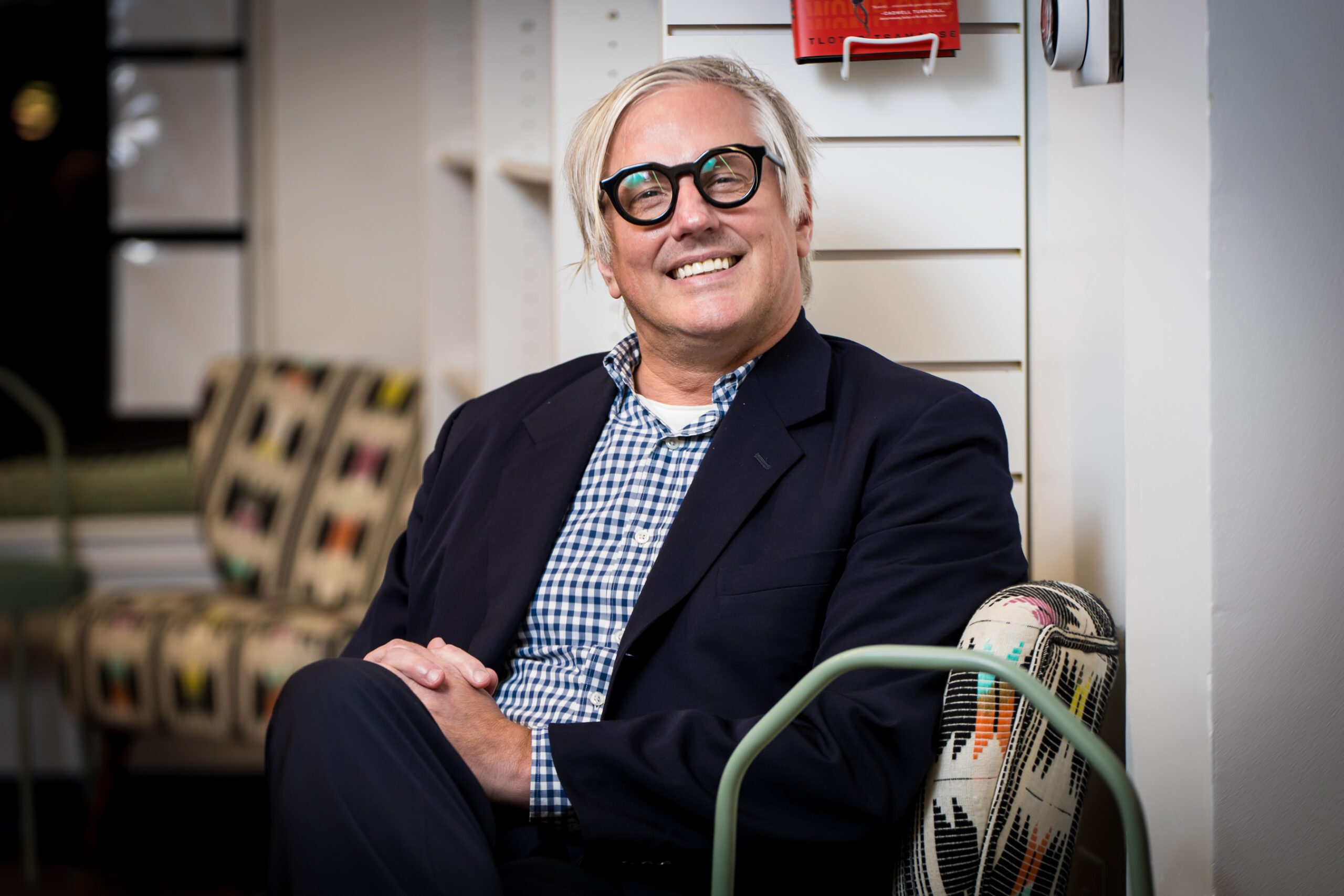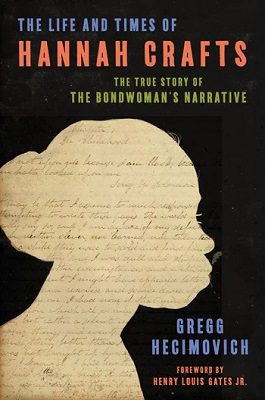Furman’s Hecimovich wins L. A. Times Book Award

After seven months of critical acclaim, “The Life and Times of Hannah Crafts: The True Story of the Bondwoman’s Narrative,” and its author, Furman University English Professor Gregg Hecimovich, received the Los Angeles Times Book Prize for biography.
The book, announced as the winner April 19, was chosen from more than 100 entries. It is “a captivating and vivid portrait of a life once stolen by enslavers and long robbed of recognition. This is at once a startling and original work” thanks to Hecimovich’s “painstaking historical detective work and keen literary analysis,” according to the selection committee.
“I am so grateful for this recognition by fellow biographers and writers,” Hecimovich said. “I love that I get to work with my Furman students to uncover amazing stories like that of Hannah Crafts!”

“The Life and Times of Hannah Crafts” won the 2024 L.A. Times Book Award for biography.
Hecimovich spent 20 years discovering who Crafts was: the first known Black woman novelist, who wrote “The Bondwoman’s Narrative” as an enslaved woman in North Carolina.
Hecimovich’s book was named one of the “10 Best Books of the Year” by The Washington Post, and received a glowing review in The New York Times, Kirkus Review and others. His interviews with CBS Saturday Morning and Tavis Smiley found national audiences. The work was also a finalist for the National Book Critics Circle Award for best biography.
“This is a stellar example of our first-rate faculty in action,” said Jeremy Cass, dean of faculty at Furman. “We are exceptionally proud of Professor Hecimovich’s work on ‘Hannah Crafts,’ and we are grateful for the many ways in which this project has impacted the student experience, through guided research and travel opportunities. This work comes at a crucial time, when Furman and the country continue the good but hard work of re-evaluating and reconciling with our past for the good of our collective future.”
Below is a Q&A with Hecimovich, who spent this academic year as a fellow at the Hutchins Center for African and African American Research at Harvard. It has been edited for clarity and space.
Q: When did you first engage the mystery about Hannah Crafts’ identity?
GH: Amazingly, 20 years ago. I was approached by the brilliant 19th-Century scholar Hollis Robbins (now dean of humanities at the University of Utah). We began collaborating on research in the archive collections at East Carolina University, where I was a professor.
Hollis and Dr. Henry Louis Gates Jr. (the Harvard professor who first uncovered Crafts’ manuscript) were so impressed with what I was discovering in the archives and in small communities related to the novel, they both were like, you take this, this is your project now.
Q: At what point were you sure you identified her?
GH: The moment when I really knew things were set was Nov. 11, 2011. I was out in the field doing research in Bertie County (North Carolina) among the descendent communities. I was at a little café in Windsor and I was handed a satchel of papers from descendents of the Wheeler family. That set of papers helped me uncover the beginning of the escape story of Hannah Bond (the author’s birthname). I talk about it a little bit in the book. Among the papers were records of this nephew, this young man that Hannah Crafts happened to be living among in 1852 to 1856 when she was serving at the Wheeler House, and when he was also nearby in Washington D.C. as a student at Columbia College, which is now George Washington University. Among those papers was his college notebook and an abolitionist sermon that he had copied from memory. Such details linked the nephew to other parts of my research that helped me discover Hannah’s path to freedom. I used the information in that satchel to help uncover, conclusively, the author’s identity. On that particular day a lot of threads came together. It was a day I’ll never forget.
Q: What surprised you?
GH: What surprised me first was the level of free-floating literacy available within the Wheeler household (where Crafts was enslaved). Early on in my research I discovered that some of the Wheeler children were exchanging letters with one of their enslaved people. His name was Moses Bond. He came from the same background.
Hannah Crafts’s book is very literary. It borrows from Charles Dickens. It riffs on Harriet Beecher Stowe, and I found some great stuff about that and some of the other literary references that shaped Crafts’s autobiographical novel.
The other things that were surprising to me were how alive descendent histories are in communities. There’s so much to learn from people who aren’t professors. Descendent communities preserved this story. They let me into their homes, they shared their histories. Those are the people who preserved and helped write this biography.
If you go and you’re humble and spend time sitting in people’s kitchens or their wood-paneled basements as they gather, you can learn a history not yet in the history books. This happened a lot during my research. I would get invited on a Saturday morning and three or four generations of a family connected to enslaved people would tell their family histories. Stories that are not in books, or in movies.
So much of the research behind Crafts’ biography had to do with those moments.
Q: What makes you listen?
GH: I am fascinated by history. This sounds boring, but as an undergraduate student I began to develop a powerful sense of historical consciousness. Everywhere I lived in North Carolina, I began to feel and see the spirit of the place. You see it with the names on signs. You understand the geography, the landscape. If you dig into the spirit of a locale, you start understanding the ghostly past that is all around us.
Then when you go into archival collections you begin to hear the past speak again. When I was an undergraduate at (the University of North Carolina at) Chapel Hill, all my friends would go to the football games, and I would peel off and go to the Southern Historical Collection, just to poke around old letters and diaries to understand the communities I was living in. So, when I was approached by Hollis Robbins and Dr. Gates about researching Hannah Crafts’ life, I realized I had the perfect subject for what I had already trained myself to see.
Q: Were you surprised by the attention the book has received?
GH: I was anticipating a lot of attention for this book because Hannah Crafts’ life story is important and the book was published by a major trade press. Ecco/HarperCollins has really good publicists, and I got to work with Cordelia Calvert, who has a great record of placing works into the public. But there are no guarantees for how a book will land.
Some of the success of the book is owed to passionate readers and book reviewers like Jenny Schuessler at The New York Times. She is an absolutely brilliant journalist of intellectual history, and she is fascinated by the same ghostly presences that I am. Just before my book was published, she interviewed me for hours on Zoom and it was like talking to other collaborators on the project. She knows the terrain of what I was trying to accomplish. And then she wrote this great piece titled “Searching for America’s First Black Woman Novelist.” That was huge to how my book ended up landing.
And then The Washington Post and CBS Saturday Morning also covered it. The brilliant African American novelist Tope Folarin loved the biography and wrote a generous review for The Washington Post. And one of the most charismatic television journalists in the nation, Michelle Miller, interviewed me on site in Murfreesboro, North Carolina, to further draw attention to Hannah Crafts’ life. These really smart people helped bring my biography to the attention of readers, reviewers and book prize judges.
Q: What’s next?
GH: Hannah Crafts is in good hands because Dr. Gates and a new generation of young scholars will help carry her story forward. Her life and times will continue beyond me with the contributions of lots of other passionate readers and researchers.
For me personally, I’ve already been working for nearly a decade on my next major project, an ensemble biography of seven enslaved men and women from Columbia, South Carolina. Photographs of these seven people were taken in March 1850, but then those images were lost until 1976, when they were uncovered in the attic of The Peabody Museum at Harvard University. They are some of the most famous photographs we have of enslaved people. I’m currently researching and writing their life stories, and the stories of their descendents.
And I am doing that work with my Furman students. Driving them out to sites connected to this research, including students into my research in obscure archives around the state.
Q: What do you want people to take away from reading your biography?
GH: I have a very Dickensian view of the world. It’s an enormous gift. The humor, childlike perspective he gives you as a deep reader.
Hannah Crafts has something similar. So many horrible things are in her life, but she creates this powerful and joyful and playful world out of it. As a biographer, I can channel some of that genius through her biography that I think is relevant. It’s in her novel and it’s why people should continue to read her, and hopefully my biography helps her continue to be an important figure in American history and literature.